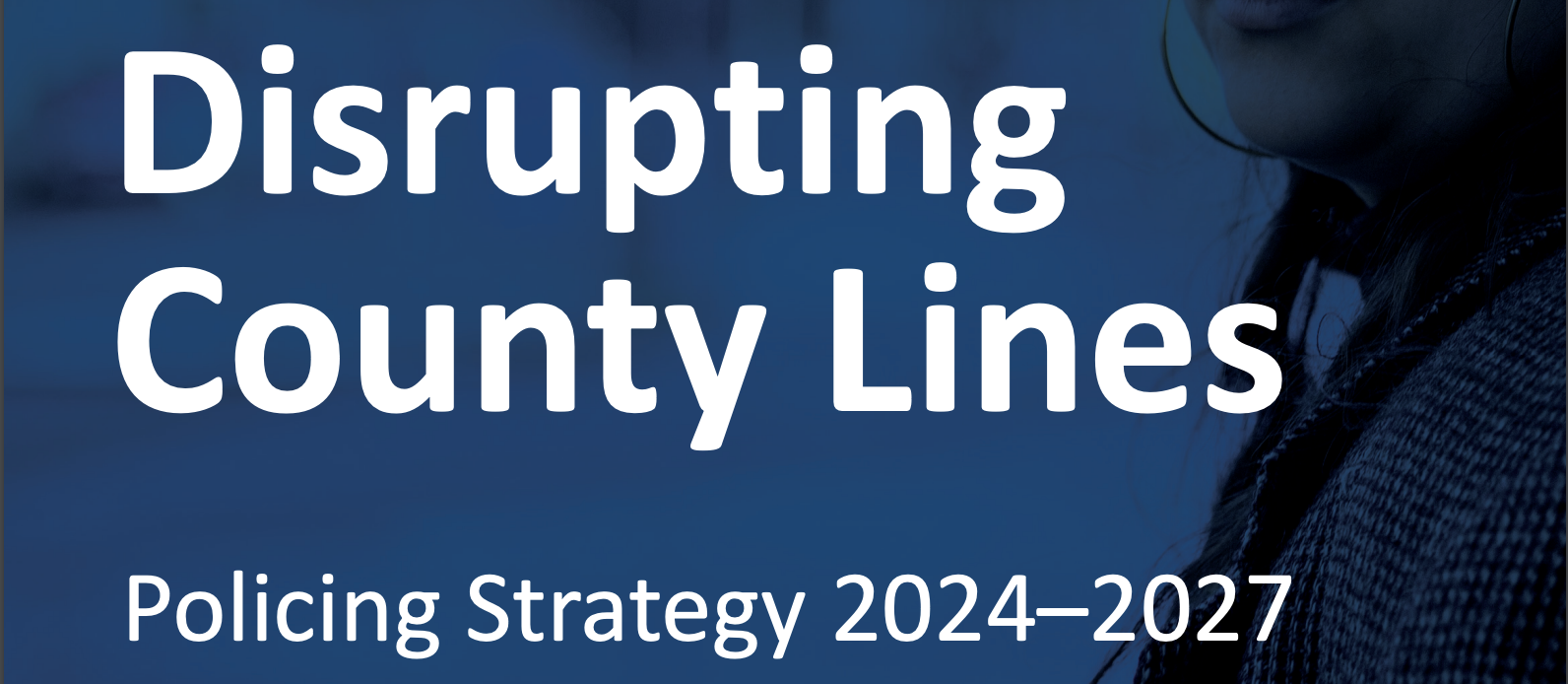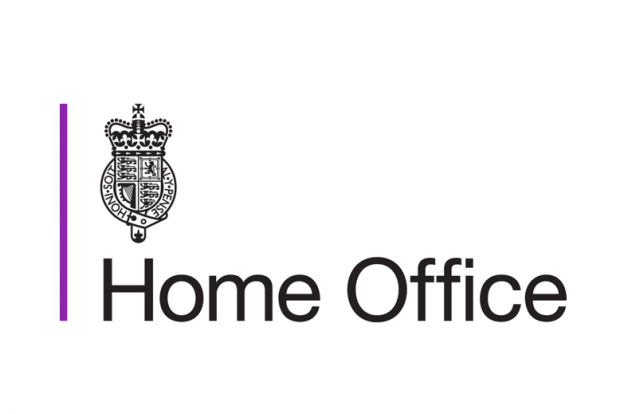
The strategy report Disrupting County Lines: Policing Strategy 2024-2027 has been released by the National Police Chief Counsel (‘NPCC’), with the National County Lines Co-Ordination Centre (‘NCLCC’). Modern slavery and human trafficking within the UK often occurs across County Lines related to illicit drug trade, which means a coordinated response is required by police forces and first responders to identify victims of exploitation. Individuals recruited to sell drugs are often vulnerable adults or minors, who need to be identified as victims of criminality and reported to the National Referral Mechanism (NRM). Most children involved in County Lines are between 15-17, however some are younger. The strategy pulls on recent statistics from the NRM whereby 11% of referrals were involved with County Lines. The strategy to disrupt County Lines was initiated in 2019, since which 5,000 drug lines have been closed. Furthermore, the strategy aims to:
- Prevent people engaging in County Lines, and the associated violence and exploitation.
- Proactively safeguard children and vulnerable adults from harm.
- Better prepare communities by building resilience against the harms of County Lines.
- Relentlessly pursue offenders, including Organised Criminal Groups, Urban Street Gangs and individuals running County Lines.
See here for the full report Disrupting County Lines: Policing Strategy 2024-2027.

Today marks International Identity Day 2024. Lack of identification is a significant risk factor in vulnerability to modern slavery and human trafficking. 850 million (1 in 9) people globally lack official documentation. This population is therefore out of reach of government protection from exploitation and abuse, as well as access to essential services including education and healthcare.
These risk factors are investigated by United Nations University Centre for Policy Research (UNU-CPR), in collaboration with the Freedom Fund. Reliefweb highlights important findings:
-
New research reveals the links between lacking official documentation and modern slavery. Without legal identity, people struggle to access basic services and are often forced into informal, dangerous and exploitative work.
-
An estimated 850 million people around the world do not have legal identity. Women, children, rural dwellers, migrants, refugees and stateless individuals are most affected.
-
Bureaucratic inefficiencies, high costs and legal gaps prevent people from securing documentation while social isolation, discrimination and stigma further worsen the situation for marginalised groups.
-
People without identity documents are often confined to informal, low-wage work where exploitation and abuse frequently go unreported due to fear of approaching authorities.
-
Government actions are urgently needed to address this global issue, including legislative reforms, community engagement and international cooperation.
See the full Freedom Fund report here.

Statistics for the National Referral Mechanism in the UK, for first quarter in 2024 (January to March) includes a summary and breakdown of the number of potential victims of modern slavery referred into the (NRM) or via the Duty to Notify (DtN) process.
Key Results:
- 4,524 potential victims of modern slavery were referred to the Home Office from January to March 2024, representing a 9% increase compared to the period from October to December 2023 (4,134) and a 5% decrease compared to the period from January to March 2023 (4,738)
- 73% (3,291) of potential victims were male and 27% (1,226) were female; this is the highest quarterly number of referrals for females since the NRM began
- 80% (3,628) of referrals were sent to the Single Competent Authority (SCA) for consideration and 20% (896) to the Immigration Enforcement Competent Authority (IECA)
- the most common nationalities referred this quarter were UK (24%; 1,105), Albanian (17%; 791) and Vietnamese (11%; 493)
- 5,161 reasonable grounds and 3,893 conclusive grounds decisions were issued this quarter; of these, 55% of reasonable grounds and 48% of conclusive grounds decisions were positive
- the number of reasonable grounds decisions and conclusive grounds decisions issued by the competent authorities were both at their highest for a quarter since the NRM began
- the Home Office received 1,125 reports of adult potential victims via the DtN process
See the full Home Office Report here.
The National Referral Mechanism (NRM) is the United Kingdom’s system that identifies potential victims of modern slavery. Annual statistics for 2023, as well as the 4th quarter October – December 2023 have been released in March 2024. The increases in referrals to the NRM are likely due to increased awareness of modern slavery, as well as potential increases in exploitation. Major findings detail:
4th Quarter, October – December 2023
- 4,142 potential victims of modern slavery were referred to the Home Office, a similar number to the previous quarter (4,131) and a 6% decrease from the same quarter in 2022 (4,413).
- The most common nationality referred in the quarter were UK nationals (27%; 1,139). Albanian nationals were the second most commonly referred with 802 referrals (19%), with Vietnamese nationals third with 268 referrals (6%).
- Of the 4,142 potential victims referred, 48% (1978) were potential victims who claimed to have been exploited when they were adults, whilst 47% (1,945) claimed to have been exploited when they were children. Of these, 75% (3,097) were male and 25% (1,041) were female.
- Regarding the type of exploitation most commonly seen amongst referrals, the highest proportion of referrals were for criminal exploitation only (28%; 1,172). For adult potential victims, labour exploitation was most commonly reported (34%; 680), whereas child potential victims were more commonly referred for criminal exploitation (43%; 844). Though referrals flagged as county lines partly drove the increase in referrals for children within the criminal exploitation category between 2020 to 2022 (average of over 550 referrals each quarter), in 2023, the number of referrals flagged fell to an average of around 390 each quarter.
Overall in 2023, 15,247 reasonable grounds and 9,825 conclusive grounds decision were made. Of these, 55% of RG decisions and 66% of CG decisions were positive. The number of CG decisions was the highest annual number made since the NRM began.
The full Home office report can be found here, Modern Slavery: National Referral Mechanism and Duty to Notify statistics UK, quarter 4 2023 – October to December.
The UK Home Office has published the most recent Modern Slavery Statistics, covering quarter 3 of 2020 (July – September).
Home Office reports that 2,506 potential victims of modern slavery were referred to the NRM. 1,224 (29%) of the NRM referrals claimed exploitation as adults whilst 1,159 (46%) claimed exploitation as children. For 5% of the referral their age at exploitation was unknown.
Overall, of the 2,506 potential victims referred in this quarter, 74% (1,853) were male and 26% (647) were female; these proportions are similar to the previous quarter. For adult potential victims, 69% (849) were male and 31% (374) were female, whilst for child potential victims, 79% (912) were male and 21% (242) were female.
The statistics flag the issue of ‘county lines’ exploitation of children – with 401 referrals flagged as county lines referrals, accounting for 16% of all referrals received in the quarter. The majority (82%; 328) of these referrals were made for male children.
UK, Albanian and Vietnamese citizens remain the most common nationalities referred to the NRM.
For detailed statistics please see the government website here.
Special Rapporteur on trafficking in persons, Maria Grazia Giammarinaro produced the June 2020 report “The impact and consequences of the COVID-19 pandemic on trafficked and exploited persons” tracking the impact of the Coronavirus pandemic on the most vulnerable communities.
Most significantly, pre-existing vulnerabilities to trafficking have been exacerbated by the extreme social and economic impacts of the pandemic. These include:
- Poverty and unemployment
- Migration, in changes in migration status, those on the migration journey and new restrictive migration policies
- Lack of services provided to victims of trafficking and re-victimisation
- The disruption of global supply chains
- Trafficking and exploitation of children
- Risks faced by victims and potential victims of sexual exploitation
The impact of the pandemic has negatively affected existing victims, as well as increasing the risk of others being preyed on by traffickers. It is clear that the COVID19 pandemic will have long term harmful impacts on exploited and trafficked persons, however the full impact is currently unfolding at yet to be determined.
Find the June 2020 report on the impact of COVID-19 pandemic on trafficked and exploited persons here. https://www.ohchr.org/Documents/Issues/Trafficking/COVID-19-Impact-trafficking.pdf
The National Referral Mechanism (NRM) is the UK framework for identifying and referring potential victims of modern slavery and ensuring they receive the appropriate support. This statistical bulletin gives a summary and breakdown of the number of potential victims of modern slavery referred into the National Referral Mechanism from 1 January to 31 March 2020 (quarter 1).
Follow this link for the NRM Statistics UK, Quarter 1 2020 – January to March.
A report released last year by the Freedom Fund and John Jay College gives some of the first reliable estimates in relation to how many children are involved in the adult entertainment industry in Kathmandu. It has always been known that a significant number of young people and children work in the adult entertainment industry in Kathmandu, but until recently no reliable estimates existed as to the true scale of the problem.
The study found that approximately 1650 young people under the age of 17 are working in the adult entertainment industry, making up approximately 17% of those working in the industry. The study also found 62% of workers were working in the industry before the age of 18. The majority of underage workers in the adult entertainment industry were found to be working in sexually exploitative environments and 99% were considered to be held in the worst forms of child slavery as defined by the International Labour Organisation’s convention.
The full study can be found
here.
The Freedom Fund have published a paper reviewing the use of Behaviour Change Campaigns, which have been used in healthcare and development sectors to try and influence and transform the behaviour of individuals. The paper reviews Behaviour Change Campaigns which have targeted issues such as child abuse, violence against women, and sexual violence in an effort to develop a future campaign that might tackle modern slavery and child sexual exploitation in Kathmandu. This paper has drawn on 28 different studies.
The paper has reached several conclusions. The main findings are:
- The focus needs to be on injunctive not descriptive norms;
- Behaviour Change Campaigns are effective in a wide variety of mediums. However, this is not to say that they will be effective in every medium and context.
- Campaigns often succeed in bringing about positive change in the targeted individuals. However, there is some evidence that adverse effects can result.
- Evaluation must be embedded from the onset of the Behavioural Change Campaign. Since Behaviour Change Campaigns can have adverse effects the continual effectiveness of the campaign must be subject to constant evaluation.
The report was released in January 2019, and can be found here.
In 2016 a report by the International Labour Organisation found that on any given day there were around 25 million people subjected to forced labour, of which just over 4 million people were below the age of 18. This report by the ILO looks back on the targets set by the international community to end forced labour by 2030 and ensure that child labour had been eradicated by 2025, and aims to guide policy and procedure in the lead up to these key dates. The report is split into three sections:
- Key numbers relating to global modern slavery and the ways in which it may manifest.
- Ending forced labour through the 2014 forced labour protocol: which is broken into 4 key parts; Prevention, Protection, Remedies, and Enforcement.
- and, Ending forced labour in children and adults: looking forward to 2030 and 2025.
These sections identify the background and key information surrounding modern slavery, the current international instruments, and makes suggestions for ensuring that the targets are met.
The report can be found here.


